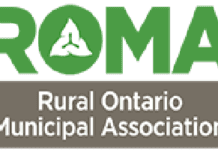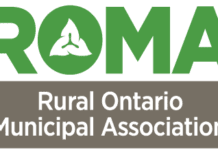Rural communities are disproportionately impacted by Ontario’s healthcare crisis, according to a new report published by the Rural Ontario Municipal Association (ROMA).
The paper, titled Fill the Gaps Closer to Home, was presented at the 2024 ROMA Conference held in Toronto January 21 to 23. It calls for different approaches and solutions to help bring improved primary health and mental health care services to people in rural communities, and provides 22 recommendations to do so.
“While the health care crisis impacts both urban and rural communities, rural Ontario is different,” said ROMA Chair Robin Jones. “Our findings reflect the desperation shared by many residents and local leaders. This is a priority for rural municipalities because it impacts our residents’ quality of life, and we are the ones who must manage the costly social and economic consequences of the health care crisis.”
ROMA undertook research on access to healthcare services as part of its priorities coming out of its 2021 report, Opportunities for Rural Ontario in a Post‑COVID World, which detailed five key priorities for ROMA’s focus.
ROMA’s research for Fill the Gaps Closer to Home included surveys of rural municipal leaders and paramedic chiefs, interviews with municipal leaders and front‑line service providers and organizations, as well as in‑depth analysis of public data and reports.
According to the data, rural Ontario municipalities contribute more than $480 million to health and social service programs, despite not having equitable access. Rural communities face a number of challenges, including lack of primary care providers and mental health resources, frequent emergency department closures, and acute shortages in health care workers and recruitment. Additionally, travel time for rural Ontarians to access these services is significant.
Among the 22 recommendations in the report, specific asks to the province include:
- Fixing primary care by creating new and integrated models to deploy healthcare providers more effectively in rural areas, and to help shift demand from emergency rooms.
- Uploading a significant portion of healthcare costs from rural communities back to the provincial government.
- Building on current efforts to expand scope of practice for community healthcare providers like nurses, nurse practitioners and paramedics.
- Requiring Ontario Health Teams to include municipalities at the table. ROMA’s data indicates that too few rural communities have been engaged.
The report indicates that these changes can start today. In some rural communities, collaborative efforts that align with ROMA’s work have already begun.
Rural Ontarians are losing primary care providers at a rate of 12% per year – four times faster than people in urban centres. With current patient loads, it takes three new primary care physicians to replace one retiring family doctor. An estimated 525,000 rural residents are lacking a primary care provider. In both 2022 and 2023, there were more than 600 temporary Emergency Department closures in rural Ontario.







